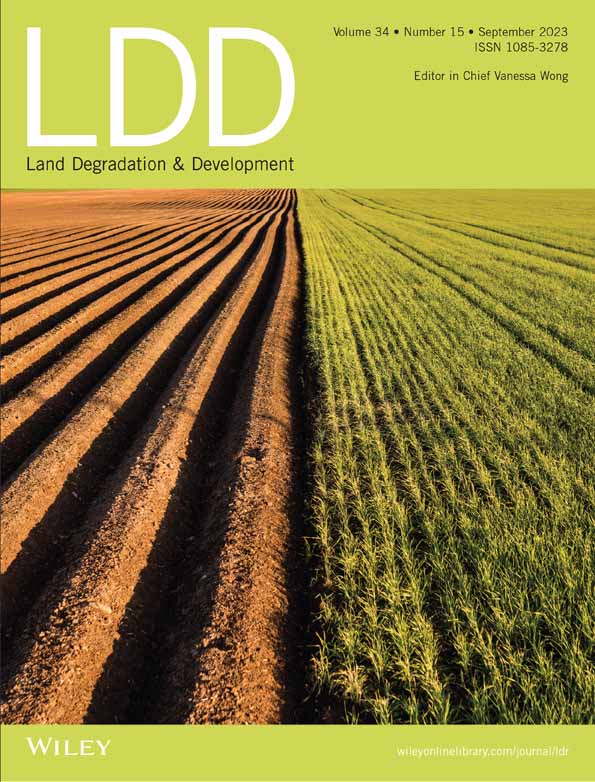Spatial correlation and impact mechanism analysis of cultivated land fragmentation and quality in the Central Plain of Liaoning Province, Northeast China
Abstract
Further exploration of the spatial correlation and mechanism of action between cultivated land fragmentation (CLF) and quality, which have guiding roles in improving cultivated land quality, is needed. However, the mechanism that determines how CLF affects quality has not yet been thoroughly investigated. The Central Plain of Liaoning Province was utilized as the research's study area, and the spatial autocorrelation analysis method was used to investigate the correlations between CLF and quality. The precise effects of different CLF indices on cultivated land quality have been specifically examined using the spatial error model (SEM). According to the findings, there is a “low in the west and high in the east” distribution tendency for CLF in the Central Plain area, and “high in the middle and low on both sides” for cultivated land quality. Furthermore, CLF and quality have a significant negative spatial link, with a correlation coefficient of −0.186. A rise in some CLF indices may enhance the difficulty of improving land quality. The quality of cultivated land declines by 0.275, 1.306, and 1.085 units for each unit rise in the number of patches (NP), edge density (ED), and aggregation index (AI) values, respectively. Therefore, it is possible to improve the degree of fragmentation of cultivated land according to local conditions, thereby improving the quality of cultivated land. The research results can provide a reference for achieving the trinity protection of cultivated land, in order to better improve the sustainability of cultivated land.
CONFLICT OF INTEREST STATEMENT
The authors declare that have no conflicts of interest.
Open Research
DATA AVAILABILITY STATEMENT
Research data are not shared.




